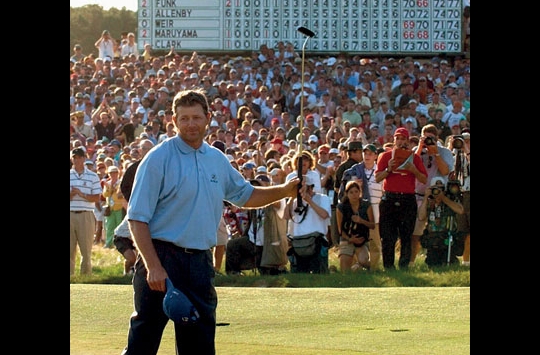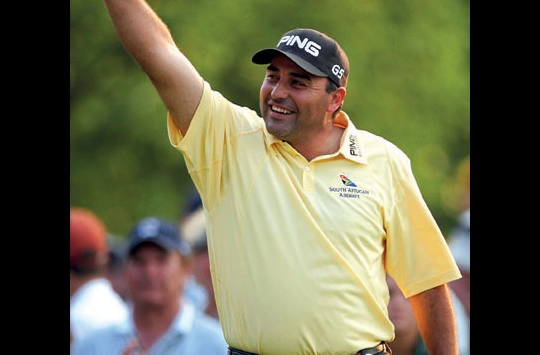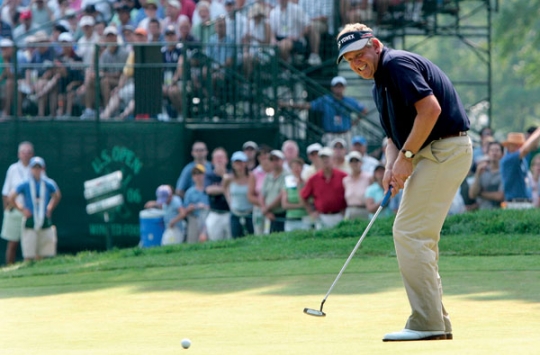Montgomerie experienced that scenario for a first time in 1992, the year when Jack Nicklaus actually congratulated him on winning – both to his face and on TV – before Tom Kite and Jeff Sluman upped their games in the worst of the weather at Pebble Beach to sneak in ahead of him. And it was the same all over again in 1994 when he and Loren Roberts lost out in a play-off to Ernie Els.
In recalling those occasions, Montgomerie digressed to take a wider look at the situation; at how sportsmen everywhere mostly suffer some kind of mental block. He cited Bjorn Borg, who won all the other tennis majors but never a US Open; Ivan Lendl who, try as he might, could not win on the grass of Wimbledon. “My ‘block’,” he continued, “applied at all the majors but it definitely had its origins in what happened at those early US Opens.
When Els addressed the press following his first win in 1994, he put down his success to his youth. He, like Montgomerie, had been well and truly briefed on how the odds were stacked against the overseas players but, at 24, he was six years younger than Monty and was not about to be spooked by such things. “When you’re in your early 20s,” he explained, “there’s not too much fear around you. You haven’t had too many disappointments. I felt it was my time and, when you’ve got that kind of confidence, you know you can do it.”
Els’ words struck a chord with Laura Davies who captured her US Women’s Open title at Plainfield in 1987. Like Els, she had to come through a three-way play-off.
“It’s definitely an advantage to be new or relatively new to the scene,” says Davies, as she looks back to that gloriously carefree stage of her career. “The first couple of times you go over to a US Open, you just play. But every year after that it gets tougher as you take more negative thoughts on board. Your fellow players will be talking about the length of the rough and the toughness of the course in general and, try as you might, you can’t close your ears to such things. They get to you.”


















